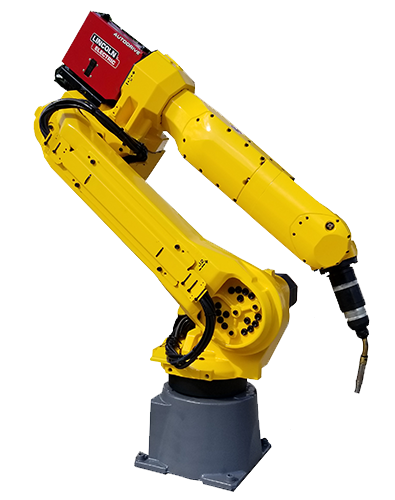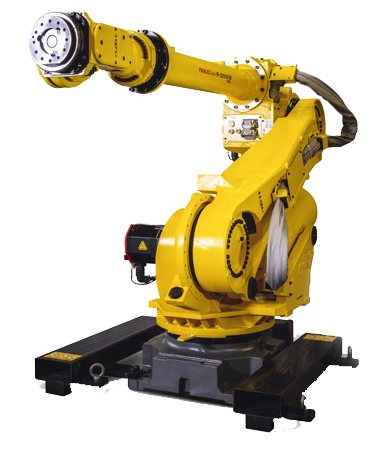Palletizing processes may be performed through using manual labor, conventional systems, or with industrial robots. Conventional palletizing systems were at one time the method of choice, but as manufacturing has become more modernized, companies are turning to automating with robotic palletizing systems.
Flexibility
Automating a palletizing process with an industrial robot provides flexibility for manufacturing. Conventional palletizing systems are referred to as hard automation because they are inflexible. Conventional palletizers can only operate with one type of product and are nearly impossible to make changes with. In today’s modern manufacturing, frequent product changes are common, and a conventional system will not accommodate those changes. A FANUC M410ib/160 can be reprogrammed or integrated with a robotic vision system to adapt to product changes. It can go from palletizing boxes to bags. Robotic palletizers can also palletize different SKUs with little to no change over required. Having a flexible automated palletizing system not only keeps manufacturing lines moving, but also provides reliability.Product Packaging Changes
As product lines have seen frequent changes so has their packaging. Today’s manufacturers are opting for less rigid forms of product packaging and instead using more aesthetically appealing and environmentally friendly options. These new forms of packaging are proving to be too difficult to handle for traditional palletizers that are designed for more structured and uniform packaging. Robotic grippers can adapt to these new and different forms of product packaging. Grippers can be used to lift parts of various shapes and sizes, which is why manufacturers are automating palletizing tasks with robots instead of hard automation. Pallets themselves are also changing with plastic becoming more common than wooden pallets. A Motoman MPL300 is more capable of securely palletizing plastic pallets than a conventional system.Improved Ergonomics
Integrating a robotic palletizing system improves workforce ergonomics. Palletizing robots are able to do all the lifting and transferring of pallets. Workers are removed from any repetitive and strenuous lifting, bending, or twisting which can put stress onto the musculoskeletal system. Robotic automation eliminates the risk of work-related injuries and the costs associated with those injuries for employers. Palletizing processes will become more efficient while your workforce safety will improve.Cost-Effective
Since palletizing robots provide a flexible automation solution that is capable of palletizing many different pallet shapes, sizes, and materials they are much more cost-effective than conventional systems. Should products or processes change, a FANUC M410ib/700 can be reprogrammed and redeployed. However, conventional palletizers cannot be adapted and redeployed should changes occur making the equipment no longer to be of value to the manufacturer. Palletizing robots can be in operation for years regardless of manufacturing changes. Another advantage of automating with robots is that companies can also capture their ROI relatively quickly with robots since they significantly increase productivity. In addition, most used FANUC palletizing robots for sale come integrated with a gripper from the previous applications.Higher Throughput
Robotic palletizers are able to process more cases in less time than other palletizing methods, increasing throughput. With higher throughput comes increased productivity rates. A single 4 axis robot can palletize up to thirty cases per minute. In addition, articulated robots can operate for twenty-four hour shifts and using multiple palletizing robots can really boost throughput. Robots can also palletize multiple SKUs simultaneously as well as service multiple infeed conveyors.Robots Done Right is the place to start when it comes to used robots. Contact us if you are interested in buying or selling a welding robot.

